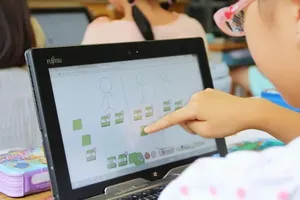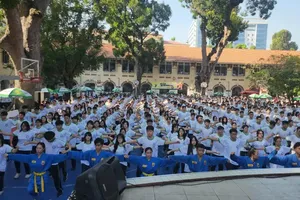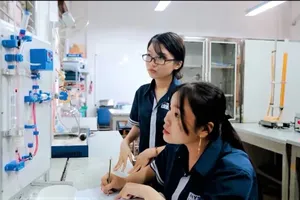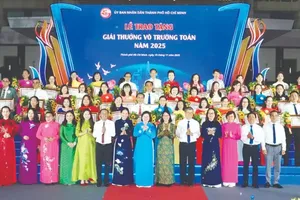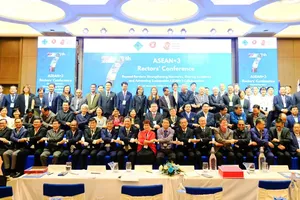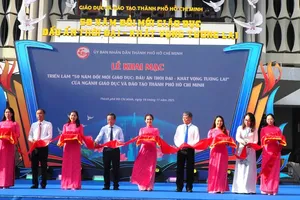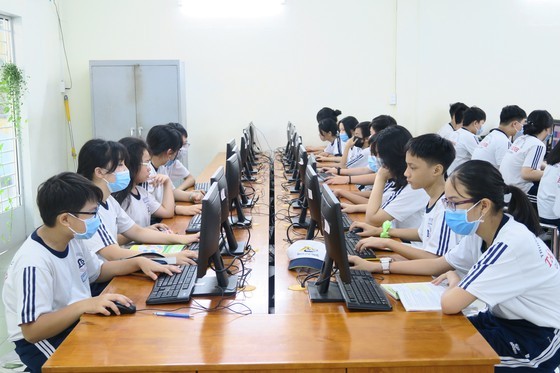 Illustrative photo
Illustrative photo
Mr. Hieu made the statement at an online conference to summarize the 2020-2021 school year and implement the direction and tasks for the 2021-2022 school year yesterday organized by the Ho Chi Minh City Department of Education and Training with the participation of Vice Chairman of the People's Committee of Ho Chi Minh City Duong Anh Duc.
Additionally, Mr. Hieu added that educational institutions have made the most of face-to-face teaching and learning as well as improving the quality of teaching and learning on the internet and television.
According to the Department’s report, the education sector has completed the dual goal of both ensuring safety to prevent and control the Covid-19 epidemic and completing the school year plan in the 2020-2021 academic year.
Following the direction of the municipal People's Committee, around 94.58 percent of educational institutions set up Covid-19 safety groups while all educational institutions meet safety standards according to the set of school safety assessment criteria.
During online teaching, teachers have had various initiatives including recording lectures, posting them on the school website periodically, online learning through Zoom, Microsoft Teams, Facebook live stream tools, giving assignments through Zalo or Viber.
By the end of 2020, the total number of schools in the city was 2,366 schools, an increase of 40 schools compared to the prior academic year. Of 2,366 schools, there are 1,374 preschools, 507 primary schools, 283 junior high schools, and 202 senior high schools.
The total number of students in the whole city is 1,682,908 students, a decrease of 2,811 students compared to the previous school year. Some densely populated districts have suffered population pressure leading to large classes; therefore, students can’t take two lesson shifts per day.
The Director of the Ho Chi Minh City Department of Education and Training said that in the academic year 2021-2022, the education sector will continue to improve the efficiency of administrative reform and state management simultaneously promoting educational institutions’ autonomy associated with self-responsibility.
In particular, in the coming school year, the education sector will develop training teachers to ensure the quality of compulsory education according to the program, especially information technology and foreign languages.
Mr. Hieu added that at the moment, about 250 schools that had been used as treatment facilities in the fight against Covid-19 have been handed over to the education sector while another 250 schools will return to the sector in November as scheduled.
The sector will conduct disinfection for preparation of welcoming students back to schools, the Department of Education and Training of Ho Chi Minh City will ask for the permission of the People's Committee to teach ninth-graders and twelve-graders directly at schools.
Speaking at the conference, Vice Chairman of the municipal People's Committee Duong Anh Duc expressed that the 2021-2022 school year takes place in the context of the epidemic, so teachers and students faced many difficulties. As a result, teachers and students have been struggling with online learning in the first semester; worse, many teachers and students are not used to the new form of teaching and learning.
By the end of October 2021, approximately 97.66 percent of students in primary schools and 98.4 percent in secondary schools can have textbooks. Therefore, the education sector ought to continue to have more solutions to ensure 100 percent of students have textbooks.
Currently, the southern metropolis has 300 classrooms per 10,000 people, but due to the impact of the epidemic, many school construction projects have been delayed. Some districts such as Binh Tan, Tan Phu, Go Vap, District 12, Binh Chanh, Hoc Mon have fewer classrooms; hence, there are large classes in these districts.
In the coming time, the education sector will continue to coordinate with the health sector and people's committees of districts to renovate educational institutions as well as speed up vaccination for students aged 12-17 in a bid to welcome them back to schools.
The Vice Chairman asked the Department of Education and Training to propose solutions and initiatives to support students and teaching staff facing difficulties in the sector. Particularly, educational institutions ought to develop teaching plans in both face-to-face and online teaching to increase opportunities for learners to access knowledge.




